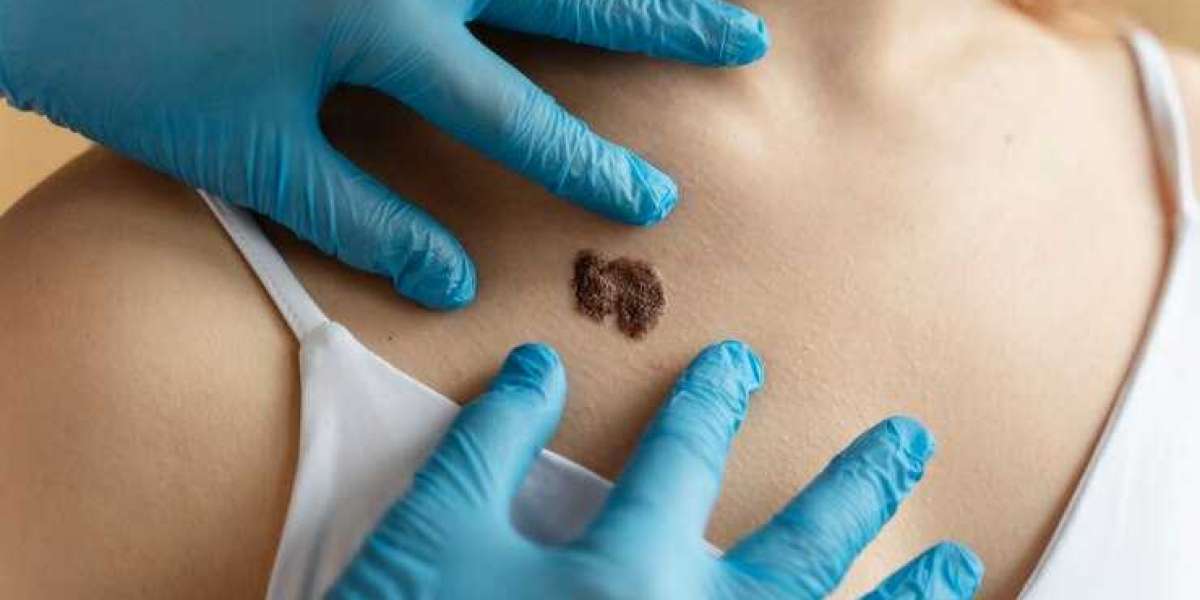Birthmarks are a common skin feature, appearing in various shapes, sizes, and colors. While manypeople embrace their birthmarks as unique characteristics, others seek removal for cosmetic, medical, or personal reasons. With advancements in dermatological treatments, birthmark removal has become a popular procedure in Dubai. However, one of the most common questions that patients ask is whether birthmark removal is reversible. In this blog, we’ll explore whether the removal of birthmarks is permanent, the factors that influence this, and what you can expect from the treatment.
1. Understanding Birthmark Removal in Dubai
Before diving into the reversibility of birthmark removal in Dubai it's important to understand what the procedure involves. Birthmark removal can be performed using various methods, including laser treatments, cryotherapy (freezing), surgical excision, and topical treatments.
Laser Treatment: This method uses concentrated light to target and break down the pigment in the birthmark. It’s particularly effective for flat, pigmented birthmarks such as freckles or café-au-lait spots.
Cryotherapy: This technique involves applying liquid nitrogen to freeze the birthmark, causing the tissue to slough off after a few days.
Surgical Excision: For larger or more raised birthmarks, a surgical procedure may be needed. This involves cutting out the birthmark and stitching the skin back together.
Topical Treatments: Creams and ointments, such as those containing hydroquinone or retinoids, can be used to gradually fade birthmarks, though results can vary.
2. Is Birthmark Removal Permanent or Reversible?
The short answer is that birthmark removal is typically permanent, but there are a few caveats. In general, the treatment methods available in Dubai aim to completely remove the birthmark, making it very unlikely for it to return. However, the final results and permanence depend on various factors, including the type of birthmark, the treatment used, and individual skin responses.
Laser Treatment
Laser treatments are one of the most popular choices for birthmark removal in Dubai, and the results are usually permanent. Laser technology works by targeting the pigment or blood vessels of the birthmark, breaking them down so they can be reabsorbed by the body. Most patients experience long-lasting or permanent removal of the birthmark after a few sessions. However, there are rare cases where the birthmark can recur, especially if the treatment wasn’t effective in fully targeting the affected area or if the birthmark is very deep.
Some patients also report a lightening of the treated area over time, which may result in some regrowth of the pigmentation. This is more common with superficial birthmarks like freckles or lentigines.
Cryotherapy
Cryotherapy is another effective method for removing birthmarks, especially for small, superficial ones. The procedure freezes the birthmark, causing it to fall off after a few days. In most cases, cryotherapy results in permanent removal, but it is not without its risks. If the treatment is not applied correctly, there’s a slight chance that the birthmark could return, especially if not all the affected tissue was destroyed.
Additionally, cryotherapy may leave a scar in the treated area, which could sometimes look similar to the original birthmark, though it typically fades over time.
Surgical Excision
Surgical excision is often the go-to treatment for larger, raised birthmarks. This method involves physically cutting out the birthmark and closing the wound with stitches. Surgical excision is considered the most permanent option for birthmark removal, as it completely removes the birthmark tissue from the body.
However, while the birthmark itself is permanently gone, there is a possibility of scarring. In some cases, the scar can be just as noticeable or even more visible than the original birthmark. That being said, with proper aftercare and following the surgeon’s advice, the scar can heal well, and the treated area will appear smooth and clear.
Topical Treatments
Topical treatments, such as creams that contain hydroquinone, can lighten birthmarks gradually over time. However, this method is typically less effective for complete removal and might not be a permanent solution. While the birthmark may lighten or fade, there is always a possibility that it could reappear, especially if the skin is exposed to sun damage or if the birthmark has deep pigmentation.
Some people choose topical treatments as a non-invasive option, but it’s important to set realistic expectations. Results can vary, and the birthmark may not disappear entirely.
3. Why Birthmarks May Reappear
Although most birthmark removal procedures in Dubai aim for permanent results, there are several reasons why a birthmark may return after removal. These include:
Incomplete Treatment: If the birthmark is not fully treated or if the wrong technique is used, there’s a chance it can return. For example, a laser treatment may fail to target all the affected areas, especially with deeper birthmarks.
Skin Changes: Sometimes, skin changes or hormonal fluctuations can trigger the formation of new birthmarks. This is especially common in younger individuals or during pregnancy.
Sun Exposure: After birthmark removal, especially with laser or cryotherapy treatments, the skin can be more sensitive to the sun. Unprotected sun exposure can cause new pigmentation or darkening of the treated area, leading to the return of the birthmark.
Type of Birthmark: Some birthmarks, like vascular birthmarks, may be more likely to return. These types of birthmarks are formed by abnormal blood vessels, and while treatments can remove the visible signs, the underlying condition may cause new birthmarks to form.
4. Prevention and Aftercare
To ensure that the results of your birthmark removal are permanent, it’s essential to follow the aftercare instructions provided by your doctor or dermatologist. Some key tips include:
Avoid Sun Exposure: Always apply sunscreen to the treated area and avoid prolonged exposure to the sun, as this can cause new pigmentation or darken the treated skin.
Follow Healing Instructions: If you have undergone surgical excision or cryotherapy, ensure that you follow the proper healing instructions, such as keeping the area clean, applying ointments as needed, and attending follow-up appointments.
Moisturize the Skin: Keep the treated skin moisturized to help it heal smoothly and prevent scarring.
Monitor for New Birthmarks: Keep an eye on the treated area and other areas of your skin. If you notice new pigmentation or changes in your skin, contact your dermatologist promptly.
5. Conclusion: Is Birthmark Removal Reversible?
In conclusion, birthmark removal is generally permanent, but there are certain factors that can affect the results. Whether you opt for laser treatment, cryotherapy, surgical excision, or topical treatments, the majority of patients experience long-lasting results. However, there is always a slight chance that birthmarks may reappear, especially if the underlying cause isn’t fully addressed or if the skin is exposed to sun damage.














